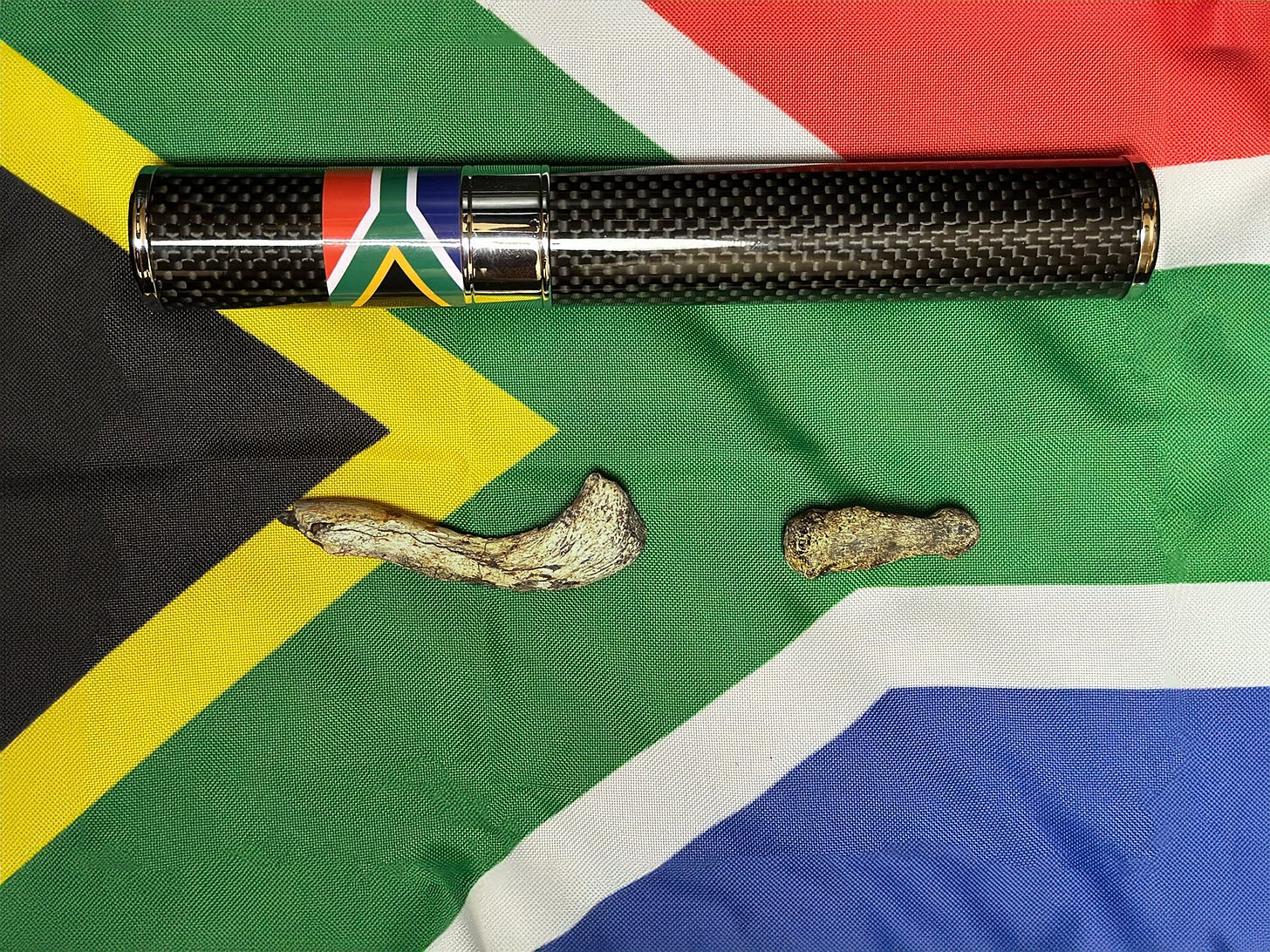Bones of contention
The earthly remains of our most ancient ancestors have travelled to subspace – stuffed into the cargo pants of a rich astronaut. The stunt has divided South Africa’s palaeoanthropological community.
Early on Friday 8 September, a Virgin Galactic spacecraft travelled to the Kármán Line, the boundary between Earth’s atmosphere and outer space. Aboard the VSS Unity were two pilots, an astronaut instructor, three paying passengers, and a carbon-fibre tube emblazoned with the South African flag.

Inside the tube were two fossils. The first, a thumb bone from Homo naledi, a human ancestor from about 250,000 years ago. The second, a collarbone from Australopithecus sediba, a human ancestor from about two-million years ago. Both were in the care of the University of the Witwatersrand (Wits) in Johannesburg.
This is not the first time that fossils have been to space, but it is the first time that ancient hominin remains have left the Earth, according to the journal Nature, and been exposed to the dangers of space travel and potential radiation.
The Australopithecus sediba fossil is particularly rare and significant. It is known as a typed specimen, which means that it is the first of the species ever described – and the yardstick by which other fossils are measured. It is irreplaceable until new technology emerges or another sample is found.
After launching from New Mexico, VSS Unity’s crew – including “the oldest astronauts to travel to space”, as Wits described the fossils – spent an hour in suborbital space before returning.
“The journey of these fossils into space represents humankind’s appreciation of the contribution of all of humanity’s ancestors and our ancient relatives,” said Professor Lee Berger, the South African palaeoanthropologist who led the teams that discovered both Australopithecus sediba and Homo naledi. “Without their invention of technologies such as fire and tools, and their contribution to the evolution of the contemporary human mind, such extraordinary endeavours as spaceflight would not have happened.”
Berger, who is the director of Wits University’s Centre for the Exploration of the Deep Human Journey, successfully applied for the permit to send the fossils to space from the South African Heritage Resources Agency. Berger said the undertaking sought to promote science and bring “global recognition for our science of human origins research”.
Bad publicity
Not everyone is convinced. Several professional bodies have condemned the event as a public relations stunt, including the Association of Southern African Professional Archaeologists, which said: “This venture was not intended to produce scientific outcomes, but instead, raises ethical concerns regarding the treatment of our heritage [ancestral human remains] while exposing the fossils to unnecessary risk for publicity purposes.”
Dr Robyn Pickering, a geologist at the University of Cape Town, said the trip had failed to promote science. It received barely any media coverage in South Africa, and almost nothing internationally, with the exception of outraged responses from scientists in Africa and the Global North.
These responses questioned the ethics and the regulatory processes which allowed the stunt to happen. For Pickering, this risks playing into the narrative that African states cannot be trusted to preserve their own heritage – a narrative often used as a justification not to return stolen artefacts to the continent.
Dr Dipuo Kgotleng, director of the University of Johannesburg’s Palaeo-Research Institute, described the space voyage as a tone-deaf “joy-ride” that did not account for the ancestral connections revered in many African cultures.
Kgotleng said that all it proved was that South Africa’s heritage – humanity’s heritage, in this case – could be used by the rich and powerful for their own ends. As she puts it, as a South African palaeoanthropologist, she does not have access to these fossils; but those with money do not encounter such barriers.
Echoing this point, several researchers – who spoke to The Continent on condition of anonymity – said Berger’s influence and status within the scientific community makes it hard to say no to him. Tim Nash, the astronaut who actually carried the bones in the pocket of his cargo pants, is a South African billionaire who owns 47% of the Cradle of Humankind, the palaeoanthropological site where the fossils were first discovered.
Dr Lee Berger did not respond to requests for comment from The Continent. Neither did Dr Bernhard Zipfel, Wits University’s curator, who signed off on the release of the fossils.



